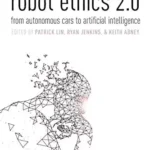
Introduction
The Turing Test has long served as a benchmark for determining whether an artificial intelligence system possesses human-like conversational abilities. Named after the British mathematician and computer scientist Alan Turing, the test entails a human evaluator engaging in conversations with both a machine and a human through a computer interface. If the evaluator cannot reliably differentiate between the two, the machine is considered to have passed the test. Over the decades, numerous AI systems have claimed to meet this standard, igniting both excitement and debate within the scientific community.
The question “Has any AI passed the Turing Test?” is complex and layered, primarily due to the varying interpretations of what constitutes a “pass.” While several AI systems, like Eugene Goostman, have claimed to have fooled a percentage of human evaluators, these claims often come with asterisks, such as specific conditions, limitations, or controversies around the test’s administration. Moreover, the absence of a universally accepted criterion for passing the Turing Test further complicates the matter.
This exploration aims to delve into the nuances of these claims and evaluate them in the context of evolving AI technologies and methodologies. We will examine the instances where AI systems have alleged to pass the Turing Test, scrutinize the criteria used, and assess whether these machines truly exhibit human-like conversational intelligence or if they merely mimic predefined patterns. Through this, we hope to provide a comprehensive answer to the complex question of whether any AI has truly passed the Turing Test.
Table of Contents
Definition of Turing Test
The Turing Test, proposed by the British mathematician and computer scientist Alan Turing in 1950. It is a measure of a machine’s ability to exhibit intelligent behavior indistinguishable from that of a human. In this test, a human evaluator interacts with both a machine and a human through a computer interface. If the evaluator cannot reliably distinguish between the responses from the machine and the human, then the machine is said to have passed the test and demonstrated human-like intelligence. The Turing Test has been a foundational concept in the philosophy of artificial intelligence and its potential capabilities.
History of The Turing Test.
In 1966, the first notable attempt at cracking the Turing Test was made by Joseph Weizenbaum with a program called ELIZA. Although basic by modern standards, ELIZA was capable of emulating the behavior of a Rogerian psychotherapist, fooling some users into believing they were interacting with a human.
Fast forward to 2011, IBM’s Watson supercomputer defeated human champions on the quiz show “Jeopardy!” While Watson’s victory was not a direct pass of the Turing Test, it was a watershed moment in showcasing the capabilities of AI in understanding and generating human-like responses under specific conditions.
In 2014, a chatbot named Eugene Goostman claimed to have passed the Turing Test by convincing 33% of human judges that it was a 13-year-old Ukrainian boy. However, this achievement was met with skepticism and controversy, as the criteria and conditions under which the test was conducted were subject to debate.
Eugene Goostman is a chatbot that, in 2014, claimed to have passed the Turing Test by fooling 33% of human judges into believing it was a 13-year-old Ukrainian boy. The event was organized by the University of Reading, and the results were initially hailed as a landmark achievement.
The claim was subsequently met with skepticism. Critics pointed out that the chatbot was strategically designed to be a 13-year-old non-native English speaker, thereby lowering expectations for the quality and depth of its responses. This led to questions about whether the Turing Test conditions were manipulated to give the AI an advantage.
The Eugene Goostman episode opened up a broader debate about the criteria and fairness in Turing Test evaluations. It underscored the need for a more rigorous, standardized approach to testing AI capabilities and served as a cautionary tale about the claims of AI systems passing the Turing Test without strict validation and peer review.
What is a Turing Test?
Artificial Intelligence (AI) refers to the simulation of human intelligence in machines, enabling them to perform tasks that typically require human cognition. Utilizing algorithms, data, and complex models, AI systems can learn, reason, and adapt to improve their performance over time. These capabilities allow AI to find applications across diverse fields, from healthcare and finance to entertainment and transportation. Please keep reading if you want to learn about AI in depth.
Now that you understand the concept of intelligence better, you’ll be able to appreciate the significance of Turing 1950. Simply put, the Turing test is a test of a machine’s ability to exhibit intelligent behavior. It is named after Alan Turing, a British computer scientist who proposed it in 1950.
The basic idea behind the Turing Test is simple: If a machine can carry on a conversation with a human entity that is indistinguishable from a conversation with another human being, then the machine can be said to be intelligent.
In order to pass the Turing Test, a machine would need to be able to hold a conversation on any topic for an predetermined period of time. The exchange must be lively and engaging, with the machine demonstrating a good understanding of the subject matter.
Additionally, computing machinery and intelligence would need to understand the subtleties of human communication, such as irony, humor, and sarcasm.
How Does a Turing Test Work?
In order to test a machine’s intelligence, a human (hidden entity) would communicate with the machine and another human entity through text-only messages. The Turing test is held in a controlled environment, where the hidden entity, the machine, and the average interrogator (judge) are unaware of each other’s identities.
In one room, the hidden entity and other participants are gathered with their computers, typing away at messages. There should be no prior topic or keywords established; the conversation can go in any direction.
In the other room, judges observe the conversations and have five minutes of questioning to determine which messages are coming from the machine and which are coming from the hidden entity next door. If a machine can dupe 30% of the human interrogators, it is considered to have passed the Turing Test.
Chatbot developers worldwide, including big names like Cleverbot, Elbot, and Ultra Hal, have been trying to create chatbots that can pass the Turing Test for years.
Also Read: How to Make an AI Chatbot – No Code Required.
Criteria and Controversies: Evaluating AI’s Performance Against the Turing Test
The Turing Test has been subjected to various adaptations and interpretations since its inception, which has led to controversies regarding its criteria. For instance, Turing never specified the percentage of human judges that must be fooled for an AI to pass the test, leaving room for subjective interpretations.
Another area of contention is the setup of the test itself. Some argue that the test should involve multi-modal forms of communication, including visual and auditory cues, to more fully evaluate an AI’s human-like capabilities. There’s also the argument that the Turing Test should assess a machine’s ability to exhibit general intelligence across a range of tasks, not just conversational ability.
The lack of a standardized framework for administering the Turing Test has also led to publicized claims of “passing” that are later debunked or questioned. As AI technologies advance, there is a growing need for more comprehensive, universally accepted criteria against which to measure human-like intelligence.
The Turing Test: A Benchmark for AI’s Human-like Intelligence
The Turing Test, proposed by Alan Turing in 1950, is often considered a litmus test for artificial intelligence. The premise is straightforward: a human evaluator interacts with an AI system and a human through a computer interface, without knowing which is which. If the evaluator is unable to reliably distinguish between the human and the AI, the machine is said to have passed the Turing Test and demonstrated human-like intelligence.
While the Turing Test may appear simple, it encapsulates a multitude of complexities that an AI system must navigate—natural language processing, context awareness, and even elements of emotional intelligence. Moreover, the test challenges the underlying algorithms to understand idiomatic expressions, sarcasm, and rhetorical questions—nuances that are innate to human communication.
Over the years, the Turing Test has been criticized for being an insufficient measure of all forms of intelligence. Critics argue that passing the Turing Test may require mere mimicry of human responses, rather than a deep understanding or consciousness. Nonetheless, it remains an influential benchmark in the AI community for its emphasis on indistinguishable human-machine interaction.
Downsides and Limitations Of The Turing Test
The Turing Test is widely considered to be a very important milestone in the field of artificial intelligence. However, it should be noted that the test is far from perfect. The University of Reading’s Turing test is not without its critics.
Over the years, the Turing Test has faced criticism, especially since early iterations required the scope of questioning to be restricted for a computer to seem “human-like”. For a long period, computers performed best when questions were structured for simple “Yes” or “No” responses or focused on specific topics. Computers typically struggled with open-ended questions demanding conversational responses.
One of the main criticisms comes from Hugh Loebner, who created another Turing test. He claims that five-minute keyboard conversations are too short to judge a computing machinery’s intelligence accurately. The average interrogator would not have time to accurately determine who is behind the messages.
Other critics argue that the Turing test can be passed by unintelligent machines that use tricks and deception to fool humans. For example, a machine might copy the style of human conversation, but it would not be able to actually understand the meaning of the words.
It is also important to remember that the Turing test doesn’t capture all representations of the concept of intelligence. For example, a machine might be able to beat a human at chess, but it would not be able to pass five minutes of questioning.
Programs like ELIZA could potentially pass the Turing Test by shuffling symbols they didn’t genuinely comprehend. John Searle contended that this doesn’t equate to human-like intelligence. For many experts, the debate about a computer’s ability to pass the Turing Test has lost its significance. The central issue has shifted from making machines seem indistinguishably human in conversation to enhancing the naturalness and efficiency of human-computer interactions, such as through conversational interfaces.
Despite these criticisms, the Turing test remains the most widely used method for testing artificial intelligence.
Computer AI Passes The Turing Test In ‘world first.’
In June 2014, a computer AI called Eugene Goostman successfully passed the Turing test at an event organized by the University of Reading. Eugene is a chatbot developed in Russia by three programmers, including Ukrainian-born Eugene Demchenko.
The program takes on the personality of a 13-year-old Ukrainian boy, an age that developers thought would make it more likely to fool humans. After all, thirteen-year-olds make grammatical mistakes, and their view of the world is often quite narrow.
Two years before passing the test, the bot won the largest-ever Turing test by convincing 29% of judges that it was human. Then, Eugene did the impossible on the 60th anniversary of Turing’s death.
On the day of, 30 judges participated in the Turing test, monitoring 300 conversations. The panel included esteemed artificial intelligence professor Aaron Sloman, Mark Pagel, and actor Rober Llewellyn. The varied backgrounds of the judges made it more difficult for the chatbot to fool them.
What Are The Variations of Turing Test?
Initially, Turing Test challenges often involved simple exchanges, focused on syntax manipulation and basic question-response mechanisms. Programs like ELIZA relied on pattern-matching algorithms to generate responses, lacking a deep understanding of the context or semantics.
However, with advancements in machine learning and computational power, AI systems have begun to tackle the challenge of context-aware conversations. State-of-the-art models like GPT-3 can retain conversational context, enabling more coherent and relevant dialogues. These models leverage massive datasets and employ complex algorithms to generate responses that can surprise even seasoned AI researchers.
In addition to text-based interactions, efforts are also underway to include auditory and visual inputs to create more comprehensive Turing Test challenges. These multi-modal systems aim to evaluate AI’s capability to process and respond to information similarly to how a human would, thereby raising the bar for what is considered a pass in the Turing Test.
The Turing Test has undergone several modifications to enhance its relevance. Some notable versions are:
Reverse Turing Test
The Reverse Turing Test, in contrast to the traditional Turing Test, flips the roles: instead of a machine trying to prove its human-like capabilities, it’s the human who must prove their authenticity to the machine. One of the most ubiquitous applications of the Reverse Turing Test is the CAPTCHA system (“Completely Automated Public Turing test to tell Computers and Humans Apart”).
CAPTCHAs are those challenge-response tasks presented on websites—like distorted text, image recognition, or pattern identification—that users must solve to verify they aren’t automated bots. The primary aim of such tests is to prevent automated software from engaging in abusive activities on the web, ensuring that only genuine humans can access certain online services or perform specific actions.
The Marcus Test
The Marcus Test, named after cognitive scientist Gary Marcus, offers an alternative to the traditional Turing Test for evaluating machine intelligence. Instead of simple text-based interaction, the Marcus Test involves having an AI program “watch” a television show or movie. After viewing, the program is asked a series of questions to gauge its understanding of the content, including the plot, character motivations, and underlying themes.
This test is particularly challenging for AI systems as it requires a deep and nuanced understanding of human behavior, emotions, cultural contexts, and narrative structures, going beyond mere pattern recognition or keyword-based responses. The goal is to evaluate an AI’s ability to comprehend complex human stories, making it a more holistic measure of machine understanding.
The Lovelace Test 2.0
The Lovelace Test 2.0, an evolution of the original Lovelace Test, serves as an alternative means to evaluate artificial intelligence, focusing on creativity rather than imitation. The original test, named after Ada Lovelace, postulated that a machine can only produce what it has been instructed to do, not create genuinely original content. Thus, to pass the Lovelace Test, an AI would need to create a piece of work—a piece of art, a novel idea, a music composition—that it wasn’t specifically designed to produce, demonstrating true creativity.
The Lovelace Test 2.0 refines this concept further, emphasizing the need for AI to produce creative content but also for the creators of the AI to be unable to explain how the AI arrived at its unique creation. This tests not just for automated generation, but for genuine innovative processes mimicking human creativity.
Winograd Schema Challenge
The Winograd Schema Challenge presents an alternative to the Turing Test, targeting an AI’s ability to understand context in language. Named after Terry Winograd, who formulated sentences that pose ambiguity in interpretation, this challenge consists of multiple-choice questions that require understanding of pronouns in context. For instance, “The trophy doesn’t fit in the brown suitcase because it is too large.” The question might be, “What is too large?” The answer could be either the trophy or the suitcase, but understanding the sentence correctly leads to the answer “trophy.”
Such questions appear simple for humans who naturally grasp context, but they are particularly challenging for AI systems which must discern nuances in language without relying on vast amounts of data or brute-force computation. The challenge thus serves as a litmus test for an AI’s genuine comprehension of human language.
How Is Turing Test Used Today?
The Turing Test, once conceptualized as a theoretical benchmark for machine intelligence, has evolved in its significance and application today. Many AI researchers and developers regard the test as an iconic yet somewhat outdated measure of machine intelligence. While it was originally designed to determine if a machine can think, contemporary discourse in AI is less about mimicking human-like behavior and more about utility, efficiency, and precision in specialized tasks.
Today, instances where AI systems “converse” with users, such as chatbots and virtual assistants, inherently undergo informal Turing Test-like evaluations daily. Consumers engage with these systems, evaluating their effectiveness based on how human-like, helpful, and accurate their interactions feel. The more seamless and intuitive these interactions, the more successful these AI solutions are deemed by their human counterparts, even if they don’t necessarily pass the traditional Turing Test.
That said, formal applications of the Turing Test have become events or competitions in the tech world. Contests, like the annual Loebner Prize, challenge AI developers to create chatbots that judges can’t distinguish from humans. While these competitions continue, it’s worth noting that the broader AI community often sees them as showcases rather than definitive evaluations of AI progress. The real value of AI today lies in its application across various industries, enhancing productivity, decision-making, and innovation.
Modern Day AI: Beyond the Turing Test
While the Turing Test remains a popular benchmark for conversational AI, contemporary research in artificial intelligence has moved beyond this singular focus. Modern AI systems are designed to excel in specialized domains, such as medical diagnostics, autonomous vehicles, and data analysis, where human-like conversational abilities are not the primary concern.
With the advent of deep learning techniques, AI systems are now capable of tasks that were previously thought to be the exclusive domain of human expertise, such as recognizing complex patterns in data or generating creative works. These capabilities have sparked discussions about new benchmarks that can evaluate AI performance in domains that the Turing Test does not cover.
As AI continues to evolve, some researchers are focusing on developing Artificial General Intelligence (AGI), which aims to replicate the broad spectrum of human cognitive abilities. Such systems would, in theory, not only pass the Turing Test but also exhibit aptitude across a wide array of intellectual tasks, thereby necessitating new evaluation metrics that are more comprehensive and nuanced.
Milestones in AI: Celebrating Achievements in the Turing Arena
The Turing Test has served as a symbolic milestone in the field of AI, sparking both inspiration and competition among researchers and developers. Programs like ELIZA and PARRY from the late 20th century served as early indications of the potential for machines to mimic human conversation, albeit in a rudimentary fashion.
Advancements in natural language processing, particularly the application of recurrent neural networks and transformers, have led to more sophisticated chatbots capable of increasingly nuanced conversations. Companies like OpenAI and Google have released conversational agents that are not only technically impressive but also approach the complexity and subtlety of human dialogue.
Despite the criticisms and debates surrounding the Turing Test, successful efforts in this arena are often celebrated as stepping stones towards more advanced AI capabilities. These milestones serve as both a reflection of current technical achievements and a gauge for future possibilities in developing AI systems that can understand, learn, and perhaps even think like humans.
What does this mean for the Future of AI
The future of AI is an exciting and uncertain one. It holds the promise of transforming our world in ways that we cannot even imagine. The future of AI also raises some daunting questions about the future of humanity.
As said by Peter Norvig, author of “Artificial Intelligence: A Modern Approach:” ‘Some people have thought of it as duplicating a human brain. I tend to think of it more as just building something that works’
Peter Norvig is right. The goal of AI is not to create something that is exactly like a human. Rather, it is to create something that can perform tasks that humans can do. As artificial intelligence gets smarter, it will increasingly be capable of doing things that humans can do.
Following Peter Norvig’s statement, here’s how this will affect us:
Transforming The Service Industry
Does your Uber driver talk too much? Or maybe they are distracted and don’t pay attention to the road. Soon, you may not have to worry about such things. Self-driving cars are already being tested on the streets and are getting better every day.
In the future, many jobs in the service industry will be replaced by robots. This includes jobs like driving, bartending, and even caregiving. As robots become more capable, they will increasingly be able to do these jobs better than humans.
AI doesn’t get tired, doesn’t need to take breaks, and can work for free. Businesses will save a lot of money by replacing human workers with robots. Once AI can fluently talk and understand human emotions, the customer service industry will be one of the first to be replaced by autonomous machines.
Of course, this also means that many people will lose their jobs. But for the foreseeable future, there will still be a need for humans in customer service.
Supporting The Scientific Community
Smarter algorithms could help us solve problems that have stumped us for years. Fields like medicine, energy, and materials science could all benefit from the power of AI.
In the future, AI will play an even bigger role in supporting the medical community. For example, in medicine, AI is used to diagnose diseases and predict patient outcomes. AI is also being used to develop new drugs and treatments.
We also see more AI-driven breakthroughs in other fields. In materials science, AI is used to develop new materials with desired properties to help us create stronger, lighter, and more durable materials.
AI is also being used to find new sources of energy. We can expect AI to help us find sustainable sources of energy that don’t damage the environment. It does this by creating models of the Earth’s surface and analyzing data to find areas that are rich in resources.
Virtually every scientific field could benefit from the power of AI. As AI gets smarter, scientists will increasingly use it to solve some of the world’s most pressing problems.
Safety and Control
One of the most talked about concerns regarding machine learning is safety. As AI gets smarter, there is a risk that it could become uncontrollable and pose a threat to humanity. This phenomenon is known as the ‘singularity.’
The idea of singularity is that at some point in the future, AI will be so intelligent that it will be able to design and improve upon itself. That would lead to a rapid increase in intelligence and, eventually, an AI that is far smarter than any human.
Some people believe that singularity is something we should strive for as it could lead to a future where humans are free from disease, poverty, and even death. However, others believe that it could be dangerous and lead to an uncontrollable AI and pose a threat to humanity.
This may sound like a science fiction movie, but it is a genuine possibility. The militarization of artificial intelligence is well underway, and the race is on to create autonomous weapons. These are weapons that can identify and target targets without any human input.
Ethical Concerns of Turing Test
If we step back for a second and agree that some digital computing machines are intelligent, the next question is: what are our ethical obligations to these machines? Does forcing them to work for us constitute slavery? What about when they are turned off or when they break down? Are we obligated to repair them?
These are tough questions that don’t have easy answers.
Some people believe that we have a moral obligation to treat intelligent machines the same way we would treat any other living creature. This includes protecting them from harm and ensuring they have the same rights and freedoms as humans.
Others believe that we have no ethical obligations to digital computing machines, as they are not conscious and cannot suffer. This view is often referred to as ‘machinism.’ There is no easy answer to this question, and it is something that will need to be debated as AI becomes more intelligent.
Also Read: AI test that detects heart disease in just 20 seconds
Continuous State Machines
Continuous state machines or CSMs are a type of abstract machine used in computer science, and more specifically in computational complexity theory and formal language theory.
These continuous state machines can be in one of a continuum of possible states. Regarding strong AI, a machine that is constantly learning would be an example of a continuous state machine.
Chatbots vs. Humans: Notable Instances of AI Trying to Outwit Mankind
Over the years, various AI systems have tried to outwit human intelligence, either directly or indirectly, in the Turing Test framework. ELIZA, for instance, was able to convince some users that they were conversing with a human psychotherapist. Similarly, IBM’s Watson, while not designed specifically for the Turing Test, managed to defeat human champions in a complex game that required significant language understanding and knowledge retrieval.
More recently, OpenAI’s GPT-3 has shown the ability to generate highly coherent and contextually relevant text that has been used in a variety of applications, from writing articles to answering queries, thus challenging the clear distinction between human-generated and machine-generated content.
While these instances have been landmarks in AI’s journey to match human intelligence, it’s crucial to note that each of these systems operates within a set of limitations defined by their architecture and training data. They excel at specific tasks but lack the generalized reasoning abilities that humans possess, marking a boundary that has yet to be crossed.
From Turing’s Vision to Contemporary AI: How Close Are We Really?
Alan Turing’s seminal paper on machine intelligence laid the foundation for the Turing Test and sparked imaginations about the potential for machines to mimic human thought. Fast forward to the 21st century, and we have seen tremendous strides in AI, from natural language processing to computer vision and beyond.
While the field has advanced rapidly, particularly with the advent of machine learning and neural networks, there’s a general consensus among researchers that we are still far from achieving Artificial General Intelligence (AGI). Current AI systems excel in narrow domains but lack the ability to transfer knowledge and skills across different areas of expertise, a hallmark of human intelligence.
That said, the distance between Turing’s vision and contemporary AI should not be measured solely in terms of technological advancement. Ethical considerations, such as the potential for AI to perpetuate societal biases or its implications for employment and privacy, also serve as dimensions along which the realization of Turing’s vision can be evaluated.
The Nuances of Passing: Differentiating Between Scripted Answers and Genuine AI Thought
The Turing Test serves as a benchmark for evaluating if an AI system can mimic human conversation convincingly. However, there are nuances in how one might consider a “pass” in the Turing Test, particularly when differentiating between scripted answers and what could be termed as genuine AI thought.
Scripted responses are pre-defined answers generated by rule-based systems. While they may be sophisticated and cover a wide array of topics, they don’t represent the AI system’s capability to understand, reason, or generate responses dynamically. They are essentially an advanced form of the “if-then” statements that characterized early chatbots.
In contrast, genuine AI thought would imply that the system has a more in-depth understanding of the context, can engage in complex reasoning, and can generate responses that are not just convincing but also insightful. AI models based on neural networks, such as GPT-3 or BERT, move closer to this ideal as they can generate responses based on patterns learned from large datasets, adding an element of “thoughtfulness” to their interactions. However, it’s crucial to note that even these advanced systems do not possess consciousness or self-awareness, limiting the extent to which their responses can be considered genuinely thoughtful.
Conclusion
The Turing Test as originally proposed by Alan Turing. Turing’s proposition suggests that if a machine’s responses in a conversation cannot be reliably distinguished from those of a human, the machine could be said to exhibit intelligence. However, we must be cautious about the context and the criteria for the test.
It’s important to consider that the capacity for human-like conversation as envisioned by Turing is more than just providing human-like responses. An AI’s ability to provide appropriate and contextually aware responses, understanding nuanced language, and exhibiting comprehension beyond the binary responses of programmed scenarios is critical. For example, language models like OpenAI’s GPT-4 have achieved impressive results in generating human-like text based on prompts, but these are fundamentally built on patterns identified in their training data, not on any form of human-like understanding or consciousness. These are generally called Language Learning Models. Most of these are based on natural Language Processing or NLG – Natural Language Generation
References
Epstein, Robert, et al. Parsing the Turing Test: Philosophical and Methodological Issues in the Quest for the Thinking Computer. Springer Science & Business Media, 2008.
Moor, James H. The Turing Test: The Elusive Standard of Artificial Intelligence. Springer Science & Business Media, 2012.
Shieber, Stuart M. The Turing Test: Verbal Behavior as the Hallmark of Intelligence. MIT Press, 2004.











